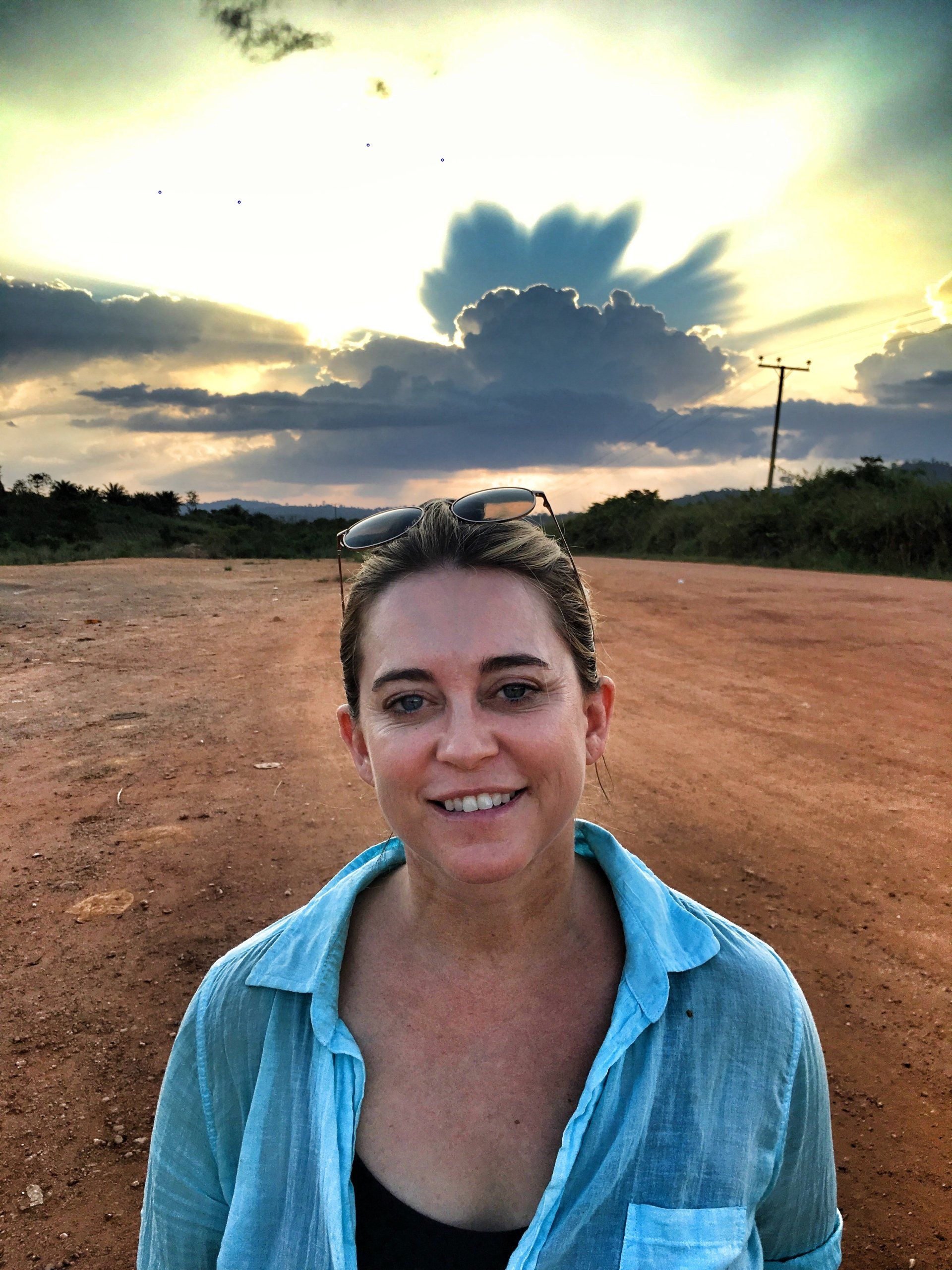Blue Chip Foundation Visits Bonsasso, Ghana With VII Documentary Crew
October, 2015
Bonsasso, Ghana—
Blue Chip Foundation
founder
Jennifer Gross ,
VII Association photographer Ed Kashi visited Bonsasso, a large community in the Amansie-West District of Ghana’s Ashanti Region, to document the progress the community made over a 9-year period with help from the MVP.
Nearly 70 percent of Bonsasso’s residents have lived on less than $1 a day, and all have struggled to get access to clean drinking water, electricity, communication services and sanitation.
Trekking to and from Bonsasso proved to be a challenge – and one that was holding the community back from further progress.
“The drive took at least four hours every day – two to get in and two to get out,” says Gross. “I could see that so many problems especially in the health sector would be solved if the government would only pave the roads.”
One of Bonsasso’s most notable improvements is in the healthcare sector. Traditionally, critical patients had few options; they could be seen by a local worker who may not have the tools or experience necessary to perform life-saving interventions or they could forego treatment entirely.
Gross spent time with Grace Obeng, a 24-hour nurse who sleeps in her office at her clinic in Datano. Obeng is the only staff member on duty in the clinic; there’s no one else. The clinic only has electricity four out of every seven days due to Ghana’s rolling blackouts, and travel to the clinic is hazardous – and sometimes impossible due to unpaved, rocky or muddy roads.
Despite the clinic’s shortcomings, Obeng, who’s been a nurse since 1995 and a midwife since 2004, has seen vast improvements over the area’s healthcare system.
“I can remember my first time I took a client to the clinic,” says Obeng. “I put the client behind my back on my motorbike, and I tied a cloth around [her], because there was no means of transport… and this girl was dying, so… I have to tie this girl behind my back. That was the situation.”
While the roads remain difficult to navigate, and many locals don’t have access to transportation – or the funds to hire transportation – MVP has stepped in to provide patients with faster care.
“
Millennium Villages organized an intervention where ambulances were dispersed via a Telecom Base Station. This improved healthcare significantly as patients were unable to travel long distances to receive emergency treatment before MVP arrived,” says Gross.
Although Obeng is alone in the clinic, she’s not tackling tough cases alone any more.
“When you get a case here and you think it’s beyond you, you call the Tele-Medicine center for help, and you describe the condition… They will call the doctor for a conference call. When you describe it and they think you can manage it here, they will advise you,” says Obeng.
Because new preventive measures are in place, the number of cases Obeng must treat has also sharply declined. “With the help of the MVP, now most of the communities are having safe drinking water, which has reduced diarrheal diseases and typhoid and other diseases related to poor hygiene,” she says. Gross was also able to witness a birth in a local health clinic. MVP’s health director, Sonia Sachs, had implemented several procedures that made the process safer for mothers and infants, drastically reducing mortality rates surrounding childbirth.
“[Sachs] was able implement simple procedures to quickly save a newborn’s life within moments of being born by clearing the nasal and chest cavity. An emphasis was placed on decreasing maternal mortality as well, and the rates have dropped exponentially. To see expecting mothers receive an ultrasound in Bonsasso was truly amazing. I’m thrilled with the updated technology at hand in the clinics,” says Gross. “Witnessing a healthy birth was an incredible moment of actualization of the work of the project and also hope for what will come in the future in this region.”
Bonsasso has made tremendous improvements in other areas, as well, including agriculture. Prior to the MVP’s intervention, maize yields were approximately 2.2 tons per hectare; today, they’re at 4.5 tons. Schools are now connected to the electricity grid and feature gender-separate restrooms, and more than 200 kilometers (124 feet) of road has been repaired.
Photographer Ed Kashi approached his end of the documentary project by focusing on Nana Acheampong, a cocoa farmer, and his entire family. The family gave Gross and the documentary crew an inside look at the powerful effects of MVP’s scholarship program.
“I knew while we were documenting the project that they would not be continuing with the girls’ scholarship program after the project was done, so I felt an immense responsibility to help these girls continue without the project. The goal is to have the projects be sustainable at the end,” says Gross. Gross stays in touch with Hannah Obeng, a young woman whose educational journey she was able to sponsor, through Facebook.
“She is continually sending me love and blessings. I love seeing pictures of her dorm room, because I know then that she is focused on her studies, but I also enjoy seeing rich pictures of the friendships she is forming. It tells me her character is deepening as a result of this experience of being around other intelligent, thought provoking students,” says Gross. “The relationship reminds me a little bit of money a lot of heart can change someone’s entire life. Hannah is a true reflection of all the people I may not be able to directly meet or have a relationship with that Blue Chip has helped in Africa.”
Millennium Villages Project (MVP) team leader Samuel Dankwa has been able to monitor the success of the project, and he says MVP’s greatest contribution to Bonsasso has been its ability to take people out of a state of distress.
“There were people who lived like 3 months of the year without food of their own, and they would have to beg. There were lots of issues with agriculture and underproduction. There was no electricity; there was no telephone,” says Dankwa, adding that access to the areas was severely limited during most of the year. “There were lacks of the basic services; access to health, for example. There was just one midwife for 30,000 people. There was no medical doctor in this area.”
Kashi, who’s earned awards from World Press Photo, POYi, CommArts and American Photography, was there to document the final year of the Millennium Villages Project.
“I’ve always admired Ed Kashi’s work, so receiving hands on education from him in the field with him for a full week was a priceless experience. He was very efficient getting the video he needed to tell people’s stories in the village. He has complete understanding of his subjects and captures the most poignant shot that will evoke his viewers. This will come through his body of work for the book,” says Gross.

